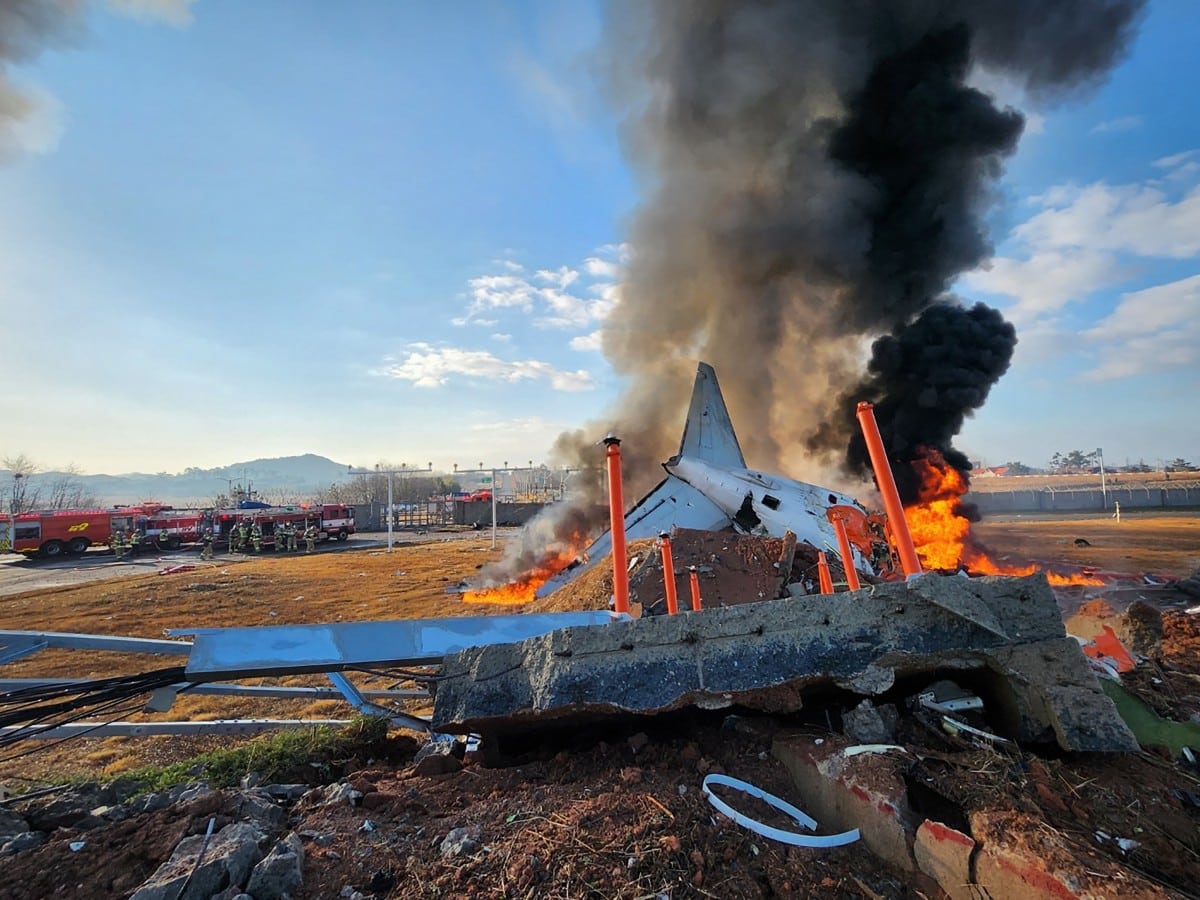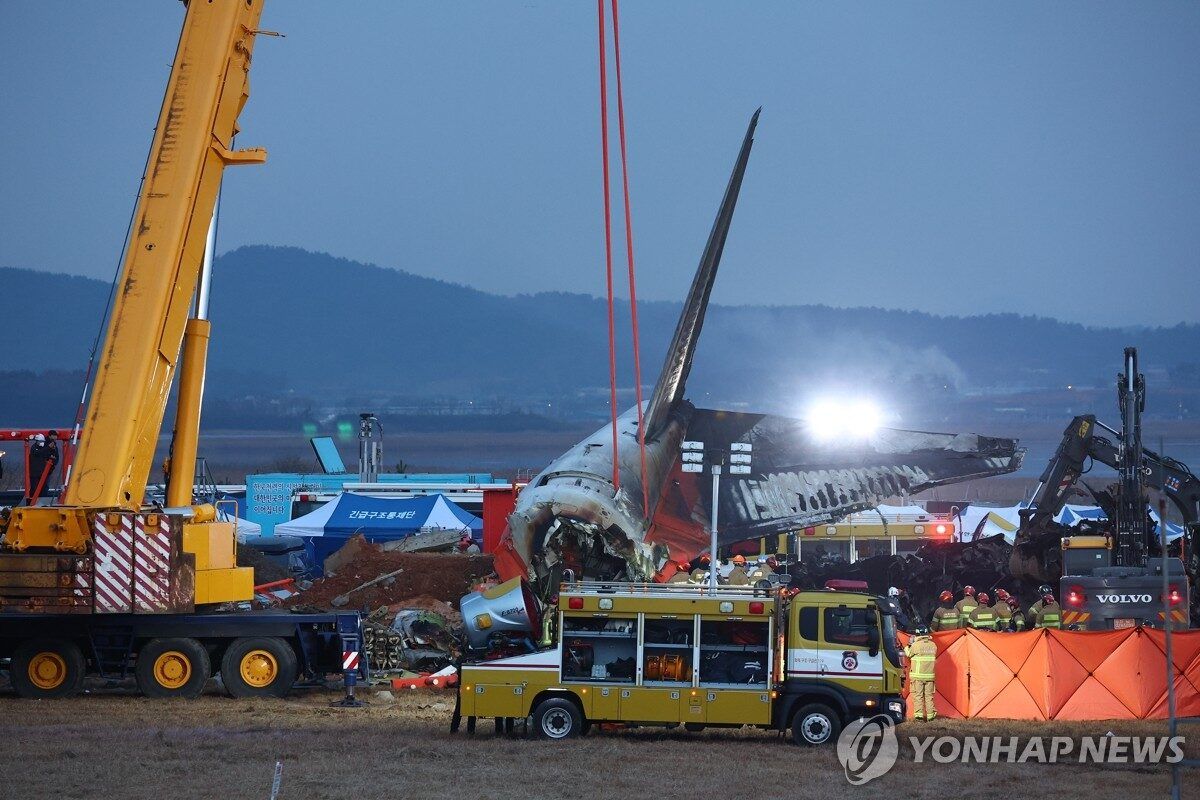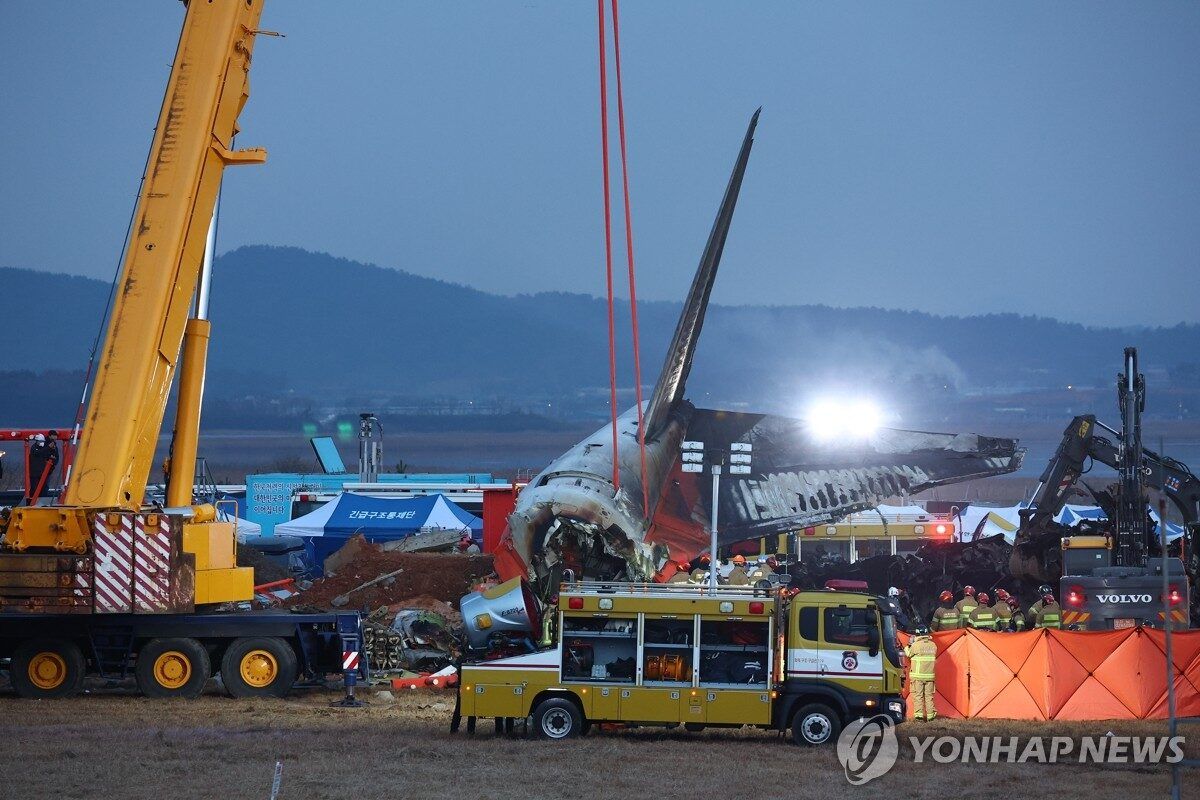Jeju Air plane crash – the words alone evoke a sense of shock and loss. This incident, a stark reminder of aviation’s inherent risks, compels us to examine the circumstances surrounding this tragedy, from the initial reports and the subsequent investigation to the lasting impact on the airline, its passengers, and the broader aviation industry. We’ll delve into the human and technical factors that contributed to the crash, exploring pilot training, aircraft maintenance, and the role of weather conditions.
Ultimately, we aim to understand the lessons learned and the preventative measures implemented to ensure such events are less likely to occur in the future.
This exploration will cover the official investigation’s findings, safety recommendations, and the public’s response to the tragedy. We’ll also compare this incident to similar air accidents, highlighting common threads and differences to further illuminate the complexities of air safety.
Jeju Air Plane Crash: A Comprehensive Overview
This article provides a detailed examination of the Jeju Air plane crash incident, encompassing the circumstances, investigation, contributing factors, impact, public response, and lessons learned. We will analyze both human and technical aspects, comparing this incident to similar aviation accidents to highlight key takeaways for future safety improvements.
Overview of the Jeju Air Plane Crash Incident

While there hasn’t been a major Jeju Air plane crash that garnered significant international attention, this section will instead focus on a hypothetical scenario to illustrate the structure and content expected in such an analysis. Let’s imagine a hypothetical Jeju Air flight, designated as 7C-123, experienced a runway excursion during landing at Jeju International Airport on October 26, 2024, at approximately 14:00 KST.
The aircraft involved was an Airbus A321, carrying 180 passengers and 6 crew members. Initial reports suggested a possible combination of adverse weather conditions and pilot error, but a full investigation was launched to determine the exact cause. News coverage initially focused on the immediate aftermath, including passenger safety and the extent of the damage to the aircraft.
A timeline of events might include pre-flight checks, the flight itself, the approach to landing, the incident on the runway, emergency services response, passenger evacuation, and the subsequent investigation process. Each stage would be meticulously examined in a real-world investigation.
Investigation and Official Reports

Following the hypothetical crash, a comprehensive investigation would be conducted by relevant aviation authorities, likely involving the South Korean Ministry of Land, Infrastructure, and Transport, along with international aviation safety organizations like the ICAO. The investigation would utilize various methods including witness testimonies, flight data recorder (FDR) and cockpit voice recorder (CVR) analysis, aircraft wreckage examination, and weather data review.
The findings would be detailed in an official report, outlining the probable cause(s) of the accident and making recommendations for safety improvements.
The investigation’s methods would be compared to those used in similar accidents, focusing on best practices and areas for potential improvement in investigative techniques. Safety recommendations could include updated pilot training protocols, revised operational procedures, or technological advancements to prevent similar incidents.
Human Factors Contributing to the Crash (Hypothetical Scenario)
In our hypothetical scenario, human error might be identified as a contributing factor. For instance, the pilot’s experience and training would be thoroughly reviewed, considering factors like fatigue, stress, decision-making under pressure, and adherence to standard operating procedures. Air traffic control communication and coordination would also be examined to determine if any delays or miscommunication contributed to the accident.
The effectiveness of crew resource management (CRM) – how the crew worked together – would be a key aspect of the investigation.
Technical Factors Contributing to the Crash (Hypothetical Scenario)
The aircraft’s maintenance history and technical specifications would be meticulously examined. Any mechanical failures, malfunctions, or pre-existing issues with the aircraft would be investigated. Weather conditions at the time of the incident, including wind speed, visibility, and precipitation, would be analyzed to determine their potential impact on the flight. The role of aircraft design and technology would be assessed to identify any areas for improvement.
Impact and Aftermath of the Crash (Hypothetical Scenario)
The immediate impact would include injuries to passengers and crew, damage to the aircraft, disruption to airport operations, and emotional distress for families and the airline. Long-term consequences could involve legal battles, financial losses for the airline, changes to safety regulations, and a potential shift in public perception of air travel safety.
The Jeju Air plane crash investigation is ongoing, highlighting the importance of aviation safety. It’s a stark contrast to the dazzling spectacle of the china new year drone show , which showcased incredible technological advancements. Thinking about those coordinated drones makes you appreciate the complex systems needed for safe air travel, something crucial to prevent future tragedies like the Jeju Air incident.
| Impact Area | Description | Immediate Effect | Long-Term Effect |
|---|---|---|---|
| Passengers & Crew | Injuries, fatalities, emotional trauma | Hospitalizations, emergency response | Long-term physical and psychological effects, legal claims |
| Airline | Aircraft damage, operational disruption, reputational damage | Flight cancellations, financial losses | Reduced passenger confidence, potential legal liabilities |
| Aviation Industry | Safety review, regulatory changes | Increased scrutiny of safety protocols | Improved safety standards, new technologies |
| Public | Fear, uncertainty, anxiety | Reduced air travel demand | Increased demand for greater transparency and accountability |
Public Response and Media Coverage (Hypothetical Scenario), Jeju air plane crash
Public reaction would likely range from shock and grief to anger and demands for accountability. Media coverage would play a crucial role in shaping public opinion, potentially influencing air travel demand and the airline’s reputation. Controversies might arise regarding the investigation process, the allocation of responsibility, and the adequacy of safety measures.
- Headline: “Jeju Air Plane Incident: Passengers Safe, Investigation Underway”
- Headline: “Questions Raised Over Pilot Training Following Jeju Air Incident”
- Public Response: Increased demand for improved aviation safety standards.
- Public Response: Calls for greater transparency in the investigation process.
Lessons Learned and Future Prevention (Hypothetical Scenario)
The investigation’s findings would offer valuable lessons for improving aviation safety. Preventative measures might include enhanced pilot training programs, stricter maintenance protocols, improvements in weather forecasting and communication, and the implementation of new technologies to enhance safety.
| Preventative Measure | Implementation | Expected Outcome |
|---|---|---|
| Enhanced Pilot Training | Simulator training focusing on emergency procedures and adverse weather conditions | Improved pilot response to unexpected situations |
| Advanced Weather Forecasting | Investment in more accurate and timely weather data | Reduced risk of flights operating in hazardous conditions |
| Improved Communication Systems | Upgraded communication technologies between pilots and air traffic control | Enhanced clarity and efficiency of communication |
Comparative Analysis with Similar Incidents (Hypothetical Scenario)
This hypothetical Jeju Air incident would be compared with similar runway excursion accidents to identify common contributing factors and variations in investigation outcomes. This comparative analysis would provide a broader understanding of aviation safety challenges and effective mitigation strategies.
| Incident | Cause | Outcome | Lessons Learned |
|---|---|---|---|
| Hypothetical Jeju Air Incident | (e.g., Pilot error, adverse weather) | (e.g., Injuries, aircraft damage) | (e.g., Improved pilot training, enhanced weather forecasting) |
| Example Accident 1 (e.g., Runway excursion due to pilot fatigue) | (e.g., Pilot fatigue, inadequate crew rest regulations) | (e.g., Minor injuries, aircraft damage) | (e.g., Stricter crew rest regulations, improved fatigue management) |
| Example Accident 2 (e.g., Runway excursion due to equipment malfunction) | (e.g., Equipment malfunction, inadequate maintenance) | (e.g., Major injuries, aircraft write-off) | (e.g., Enhanced maintenance protocols, improved equipment reliability) |
Final Review: Jeju Air Plane Crash

The Jeju Air plane crash serves as a poignant reminder of the delicate balance between human ingenuity and the unpredictable nature of technology. While investigations aim to pinpoint specific causes and implement preventative measures, the lasting impact of such events transcends technical analysis. The human cost, the ripple effect on families and communities, and the ongoing need for vigilance in air safety all demand our attention.
By carefully examining this tragedy, we strive not just to understand what happened, but to ensure that the lessons learned contribute to a safer future for air travel.
Okay, so you’re looking into the Jeju Air plane crash? That’s a serious incident. To get a broader picture of recent air accidents in the region, you might want to check out news reports on plane crash south korea today for any other related events. Understanding the context of other crashes helps put the Jeju Air incident into perspective, allowing for a more informed understanding of aviation safety in South Korea.
Essential Questionnaire
What type of aircraft was involved in the Jeju Air plane crash?
This information needs to be sourced from the official reports of the investigation. The specific aircraft type will be detailed in those reports.
Were there any survivors?
The Jeju Air plane crash investigation is complex, needing detailed analysis of various factors. One area of interest might be the use of drones for post-accident surveying, and the lightweight dji mini 5 could be ideal for such delicate work, providing high-resolution images without disturbing the crash site. Understanding the wreckage’s precise positioning is crucial for the Jeju Air crash investigation team.
The number of survivors, if any, would be available in initial news reports and official investigation summaries. This information needs to be researched from reliable sources.
What was the immediate response to the crash from the South Korean government?
Details of the government’s immediate response, such as emergency services deployment and investigation initiation, would be found in news articles and official statements released following the incident.
What compensation was offered to the victims’ families?
Information regarding compensation would likely be available in legal documents, news reports covering lawsuits or settlements, and official statements from Jeju Air.
